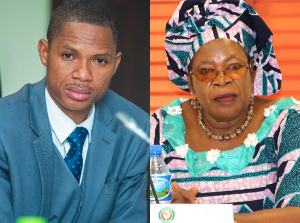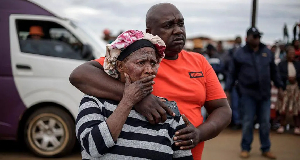Small-scale mining is essentially an artisanal or small industrial form of raw material extraction. In Ghana, there are about 300 registered small-scale mining groups and they constitute a major source of employment especially for small-scale gold and diamond miners, and contribute some foreign exchange to Ghana’s economy. However, there are a lot more of such groups that are not registered, and cannot access any meaningful form of support to boost their business.
Apart from gold and diamonds, other small-scale activities serving for employment for a lot of people center on the extraction of salt, kaolin, silica, sand, brown clay, aggregates and crushed rocks, etc. However, most small-scale miners popularly referred to as ‘galamsey’ engage in gold mining.
There are several challenges faced by small-scale miners. These also pose a great danger to the environment. The activities of the miners pollute rivers and streams nearby that serve as a source of drinking water for communities downstream. The ‘crude’ technologies used also pose a danger to the miners themselves who are constantly killed due to poor occupational-safety standards. Aside the environmental and occupational hazards, these businesses are not registered and hence, do not benefit from any form of training to improve their business practices. The non-registration of their businesses also means government loses the requisite taxes for development.
Small-scale mining is often poverty driven and located in rural areas. Miners are generally unskilled and earn little. Individuals may be involved in a number of different types of mining activity: Gold or diamond rush, this is characterized by unstable communities, which are often saddled with environmental degradation from crude methods used. In Ghana, the Birim and Densu Rivers in the Eastern Region are examples of rivers that serve as a source of drinking water for several communities but have been gravely affected by small-scale mining activities. . A principal development issue is how to ensure that small-scale mining does not harm the community, but instead creates the basis for poverty reduction and sustainable development. How this can be achieved depends partly on the nature of the mining. For example, if exploitation is sudden (such as alluvial and rush activities in Ghana) and short-lived, particular effort should be made to stabilize the local community.
In the case of remote, seasonal operations the main issue is how to integrate the small-scale mining sector into the local community and encourage the businesses to invest their profits in other forms of economic activity and services such as schools and health centres. Research work done by Thomas Hentschel, Felix Hruschka and Michael Priester in Artisanal and Small-Scale Mining: Challenges and opportunities, they identify organizational aspects as playing a key role in this context, and highlight the common tools for improving the sector as;
? Organizational and legal support; ? Access to prospective land; ? Training and application of technology; ? Dissemination of best practice; ? Business management; ? Availability of micro-credits and other development instruments; and use of revenues.
In the past, most activities to support mining sector have focused on the large scale mining operations, mainly to improve their productivity, legal status or environmental performance. These projects have sometimes benefited only a few operations or mining entrepreneurs and have not initiated any sustainable development in the whole mining community or the nearby communities. In other words support was not seen in the context of the whole community and the people living in the communities. There are also a lot of examples, especially from ‘gold-rush’ areas, where there has been no benefit at all to the livelihoods of the communities during or after the rush activities.
In many of those regions, tonnes of gold have been produced, but once the rush is over poverty returns and there are perhaps even more problems because of the cultural damage which may have happened in these areas. The UN Department for Economic and Social Affairs has developed an interesting sustainable livelihood approach for artisanal mining communities, which is currently under pilot implementation in Mali, Ethiopia, Ghana, and Guinea. The main policy recommendations for this approach, according to Labonne and Gilman (1999) are:
? Mainstreaming poverty eradication into national policymaking in all sectors including minerals. ? Promoting small-scale mining as a catalyst and anchor for other productive activities to stimulate the development of complementary and alternative productive ventures necessary for sustainable poverty alleviation. ? Placing people first through both pro-poor strategies and participatory strategies aimed at strengthening the organizational capability of grassroots communities, thereby favouring a bottom-up approach. ? Reversing the focus from ‘hands-on state intervention’ (which has rarely been successful) to the creation of private enterprises, particularly microenterprises or cooperatives.
For Ghana, the pilot projects presents an opportunity to scale up the successes especially now when scale-scale mining activities have come up for criticism. Streamlining of operations, training and application of technology can reduce the negative environmental impact so as to boost investment, create jobs and also support initiatives at sustained community development.
Yaw Adu-Gyamfi
Opinions of Thursday, 1 December 2011
Columnist: Adu-Gyamfi, Kwaku














